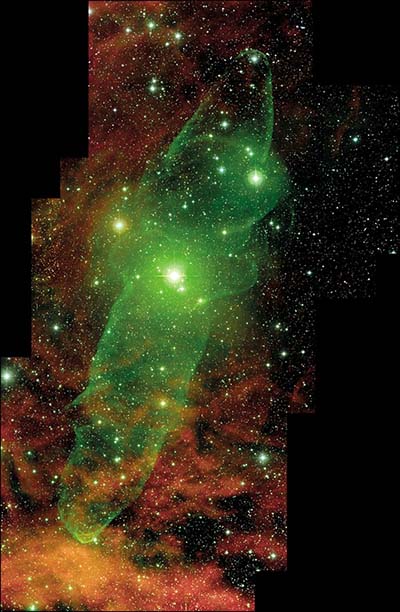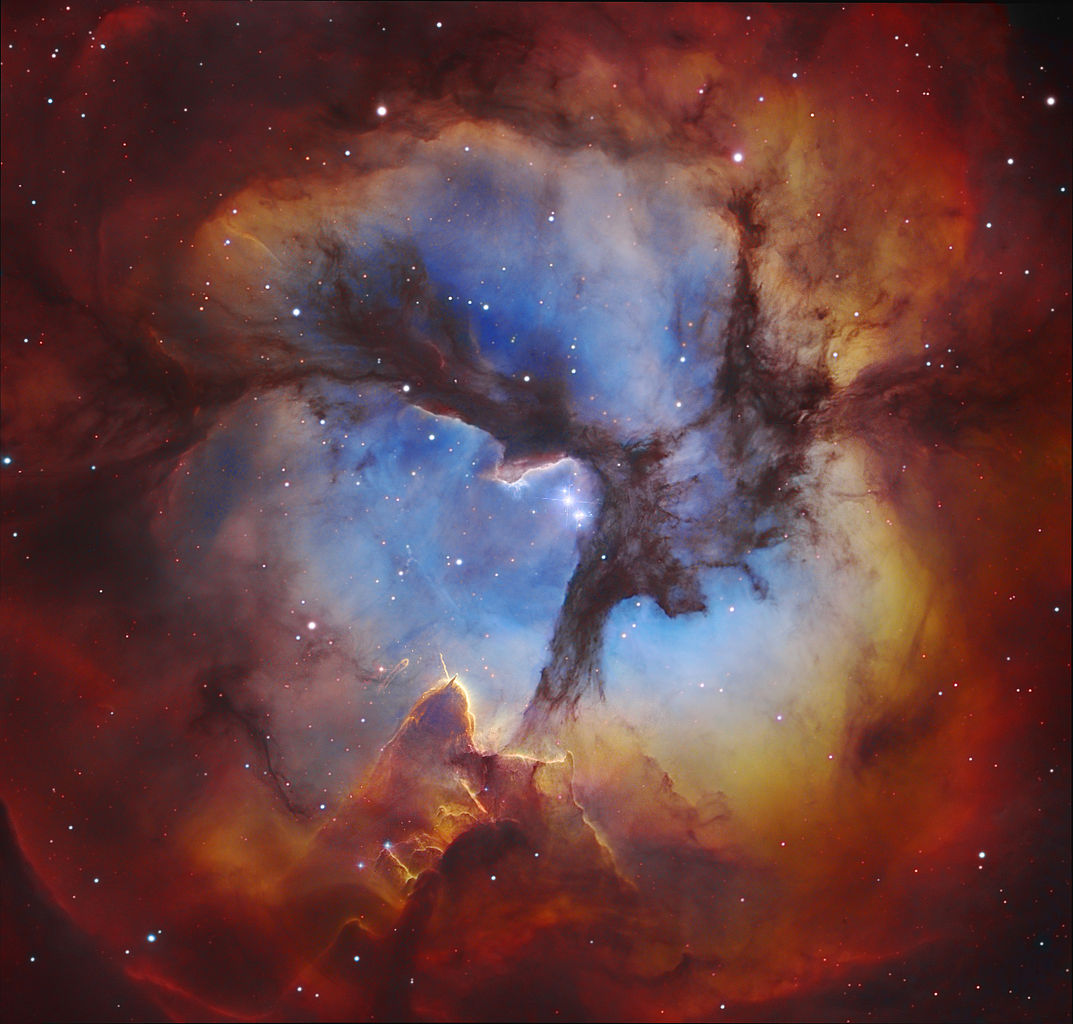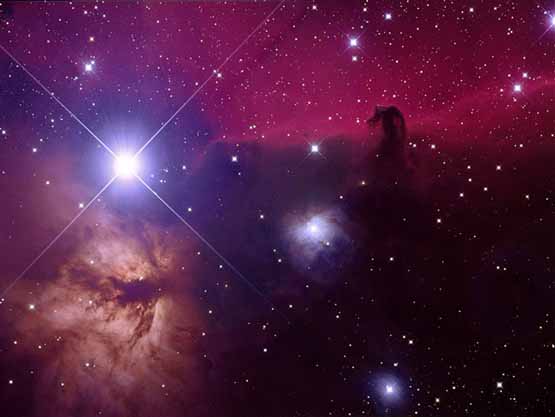

A nebula is an interstellar cloud of dust, hydrogen gas and plasma. It is the first stage of a star's cycle. Originally nebula was a general name for any extended astronomical object, including galaxies beyond the Milky Way (some examples of the older usage survive; for example, the Andromeda Galaxy was referred to as the Andromeda Nebula before galaxies were discovered by Edwin Hubble).
Nebulae often form star-forming regions, such as in the Eagle Nebula. This nebula is depicted in one of NASA's most famous images, the "Pillars of Creation". In these regions the formations of gas, dust and other materials 'clump' together to form larger masses, which attract further matter, and eventually will become big enough to form stars. The remaining materials are then believed to form planets, and other planetary system objects.
Many nebulae form from the gravitational collapse of diffuse gas in the interstellar medium or ISM. As the material collapses under its own weight, massive stars may form in the center, and their ultraviolet radiation ionizes the surrounding gas, making it visible at optical wavelengths. An example of this type of nebula is the Rosette Nebula or the Pelican Nebula. The size of these nebulae, known as HII regions, varies depending on the size of the original cloud of gas, and the number of stars formed can vary too. As the sites of star formation, the formed stars are sometimes known as a young, loose cluster.
Some nebulae are formed as the result of supernova explosions, the death throes of massive, short-lived stars. The material thrown off from the supernova explosion is ionized by the supernova remnant. One of the best examples of this is the Crab Nebula, in Taurus. It is the result of a recorded supernova, SN 1054, in the year 1054 and at the centre of the nebula is a neutron star, created during the explosion.
Other nebulae may form as planetary nebulae. This is the final stage of a low-mass star's life, like Earth's Sun. Stars with a mass up to 8-10 solar masses evolve into red giants and slowly lose their outer layers during pulsations in their atmospheres. When a star has lost a sufficient amount of material, its temperature increases and the ultraviolet radiation it emits is capable of ionizing the surrounding nebula that it has thrown off.

Mz 3 (Menzel 3) is a young bipolar planetary nebula (PN) in the constellation Norma that is composed of a bright core and four distinct high-velocity outflows that have been named lobes, columns, rays, and chakram. These nebulosities are described as: two spherical bipolar lobes, two outer large filamentary hour-glass shaped columns, two cone shaped rays, and a planar radially expanding, elliptically shaped chakram.
Mz 3 is a complex system composed of three nested pairs of bipolar lobes and an equatorial ellipse. Its lobes all share the same axis of symmetry but each have very different morphologies and opening angles. It is an unusual PN in that it is believed, by some researchers, to contain a symbiotic binary at its center. One study suggests that the dense nebular gas at its center may have originated from a source different from that of its extended lobes. The working model to explain this hypothesizes that this PN is composed of a giant companion that caused a central dense gas region to form, and a white dwarf that provides ionizing photons for the PN. Mz 3 is often referred to as the Ant Nebula because it resembles the head and thorax of a garden-variety ant.

Barnard's Loop (catalogue designation Sh 2-276) is an emission nebula in the constellation of Orion. It is part of the Orion molecular cloud complex which also contains the dark Horsehead and bright Orion nebulae. The loop takes the form of a large arc centered approximately on the Orion Nebula. The stars within the Orion Nebula are believed to be responsible for ionizing the loop.
The loop extends over about 600 arcminutes as seen from Earth, covering much of Orion. It is well seen in long-exposure photographs, although observers under very dark skies may be able to see it with the naked eye.
Recent estimates place it at a distance of either 159 pc (518 light years) or 440 pc (1434 ly) giving it dimensions of either about 100 or 300 ly across respectively. It is thought to have originated in a supernova explosion about 2 million years ago, which may have also created several known runaway stars, including AE Aurigae, Mu Columbae and 53 Arietis, which are believed to have been part of a multiple star system in which one component exploded as a supernova.
Although this faint nebula was certainly observed by earlier astronomers, it is named after the pioneering astrophotographer E. E. Barnard who photographed it and published a description in 1894.
The Boomerang Nebula is believed to be a star system evolving toward the planetary nebula phase. It continues to form and develop due to the outflow of gas from its core where a star in its late stage life sheds mass and emits starlight illuminating dust in the nebula. Millimeter scale dust grains mask portions of the nebula's center so most escaping visible light is in two opposing lobes forming a distinctive hourglass shape as viewed from Earth. The outflowing gas is moving outwards at a speed of about 164 km/s and expanding rapidly as it moves out into space; this gas expansion results in the nebula's unusually low temperature.
Keith Taylor and Mike Scarrott called it the "Boomerang Nebula" in 1980 after observing it with the Anglo-Australian telescope at the Siding Spring Observatory. Unable to view it with great clarity, the astronomers saw merely a slight asymmetry in the nebula's lobes suggesting a curved shape like a boomerang. The nebula was photographed in detail by the Hubble Space Telescope in 1998 revealing a more symmetric hourglass shape.
In 1995, using the 15-metre Swedish-ESO Submillimetre Telescope in Chile, astronomers revealed that it is the coldest place in the Universe found so far, besides laboratory-created temperatures. With a temperature of -272 °C, it is only 1°C warmer than absolute zero (the lowest limit for all temperatures). Even the -270 °C background glow from the Big Bang is warmer than the nebula. It is the only object found so far that has a temperature lower than the background radiation.
In 2013, observations of the ALMA radio interferometer revealed other features of the Boomerang Nebula. The visible double lobe of the Boomerang Nebula was observed to be surrounded by a larger spherical volume of cold gas seen only in sub-millimeter radio wavelengths. The nebula's outer fringes appear to be gradually warming.
As of mid-2017, it is believed that the star at the center of the nebula is a dying red giant.
NGC 7635 is commonly known as the Bubble Nebula and is located approximately 11 thousand light-years distant in the constellation Cassiopeia. The nebula was formed by a very massive star designated BD +60°2522. This star is estimated to be about 40 times as massive as our Sun. Its huge energy emissions and prodigious stellar winds have blown a bubble of ionized gas approximately 6 to 10 light-years in diameter. This very active star is of a stellar class known as Wolf-Reyet stars. These stars are in the final stage of their lives and are rapidly expelling their outer layers in an extremely powerful and high velocity stellar wind that can exceed 1500 kilometers per second. When this wind rams into a surrounding interstellar gas cloud it creates an expanding shock front we observe as a ring or bubble. This process will continue until the star finally ends its violent life in a supernova explosion.
The image above is known as a mapped, or false, color image and was acquired using narrowband filters. It was assembled using the standard Hubble palette with SII mapped to Red, Ha mapped to Green and OIII mapped to Blue. The stars were overlaid with color data from a separate RGB image. This was accomplished in Photoshop with the purpose of displaying stars that approximate true colors.
NGC 6302 (also known as the Bug Nebula, Butterfly Nebula, or Caldwell 69) is a bipolar planetary nebula in the constellation Scorpius. The structure in the nebula is among the most complex ever observed in planetary nebulae. The spectrum of NGC 6302 shows that its central star is one of the hottest stars known, with a surface temperature in excess of 250,000 degrees Celsius, implying that the star from which it formed must have been very large.
The central star, a white dwarf, was identified in 2009, using the upgraded Wide Field Camera 3 on board the Hubble Space Telescope. The star has a current mass of around 0.64 solar masses. It is surrounded by a dense equatorial disc composed of gas and dust. This dense disc is postulated to have caused the star's outflows to form a bipolar structure similar to an hourglass. This bipolar structure shows features such as ionization walls, knots and sharp edges to the lobes
inkowski 2-9, abbreviated M2-9 (also known as Minkowski's Butterfly, Twin Jet Nebula, the Wings of a Butterfly Nebula, or just Butterfly Nebula) is a planetary nebula that was discovered by Rudolph Minkowski in 1947. It is located about 2,100 light-years away from Earth in the direction of the constellation Ophiuchus. This bipolar nebula takes the peculiar form of twin lobes of material that emanate from a central star. Astronomers have dubbed this object as the Twin Jet Nebula because of the jets believed to cause the shape of the lobes. Its form also resembles the wings of a butterfly. The nebula was imaged by the Hubble Space Telescope in the 1990s.
The nebula has inflated dramatically[4] due to a fast stellar wind, blowing out into the surrounding disk and inflating the large, wispy hourglass-shaped wings perpendicular to the disk. These wings produce the butterfly appearance when seen in projection. The outer shell is estimated to be about 1,200 years old (Schwarz et al. 1997).
The California Nebula (NGC 1499/Sh2-220) is an emission nebula located in the constellation Perseus. Its name comes from its resemblance to the outline of the US State of California in long exposure photographs. It is almost 2.5° long on the sky and, because of its very low surface brightness.
JWST Reveals Cosmic Cliffs, Glittering Landscape of Star Birth
NASA - July 12, 2022
CNN: NASA releases first images from JWST
CNN - July 12, 2022

The Carina Nebula was a classic target of the Hubble telescope - Webb's predecessor - although in this Webb version we get a very different rendering. Carina is one of the largest and brightest nebulae in the sky, located roughly 7,600 light-years from Earth. Nebulae are stellar nurseries. They are a massive clouds of gas and dust in which new stars are forming. Except in this Webb image, we not only see the stars - our eyes are drawn to all that gas and the dust. Astronomers refer here to a "cosmic reef", or "cosmic cliff" - a kind of broad demarcation between dust in the bottom half, and then gas in the top half. One of Webb's key scientific goals is to study how stars form, and Carina is an excellent place to do
The Cat's Eye Nebula (also known as NGC 6543 and Caldwell 6) is a planetary nebula in the northern constellation of Draco, discovered by William Herschel on February 15, 1786. It was the first planetary nebula whose spectrum was investigated by the English amateur astronomer William Huggins, demonstrating that planetary nebulae were gaseous and not stellar in nature. Structurally, the object has had high-resolution images by the Hubble Space Telescope revealing knots, jets, bubbles and complex arcs, being illuminated by the central hot planetary nebula nucleus (PNN). It is a well-studied object that has been observed from radio to X-ray wavelengths.

Astronomers discover secret star at the center of gorgeous Cat's Eye Nebula Live Science - September 25, 2022
A computer-generated map reveals a pair of perfectly symmetrical rings swirling around the entire length of the nebula's outer shell. According to the researchers, there's only one possible cause of these rings' symmetry: a double-barreled burst of energy known as a precessing jet. Basically, as the nebula's central star died, it released twin bursts of high-density gas in opposite directions at the same time, the study authors wrote. But rather than remaining fixed in place, the jets began to wobble (or precess) like a spinning top, leaving slowly looping rings of gas twirling above and below the star.
NGC 6334, colloquially known as the Cat's Paw Nebula, Bear Claw Nebula, or Gum 64, is an emission nebula and star-forming region located in the constellation Scorpius. NGC 6334 was discovered by astronomer John Herschel in 1837, who observed it from the Cape of Good Hope in South Africa. The nebula is located in the Carina–Sagittarius Arm of the Milky Way, at a distance of approximately 5.5 kilolight-years from the Sun. The nebula is a high mass filamentary cloud structure spanning ~320 ly. In the visible part of the spectrum, it emits mainly in red (from hydrogen atoms) and blue (from oxygen atoms). Several embedded star-forming regions have been identified from infrared and radio emissions.
IC 5146 (also Caldwell 19, Sh 2-125, Barnard 168, and the Cocoon Nebula) is a reflection/emission nebula and Caldwell object in the constellation Cygnus. The NGC description refers to IC 5146 as a cluster of 9.5 mag stars involved in a bright and dark nebula. The cluster is also known as Collinder 470.

James Webb telescope reveals hidden past of the 'Crystal Ball Nebula' Live Science - April 21, 2025
Crystal Ball Nebula aka NGC 1514 is a planetary nebula in the zodiac constellation of Taurus, positioned to the north of the star Psi Tauri along the constellation border with Perseus. It was discovered by William Herschel on November 13, 1790, describing it as "a most singular phenomenon" and forcing him to rethink his ideas on the construction of the heavens.

Dark nebulae are clouds of dust which are simply blocking the light from whatever is behind. They are physically very similar to reflection nebulae; they look different only because of the geometry of the light source, the cloud and the Earth. Dark nebulae are also often seen in conjunction with reflection and emission nebulae. A typical diffuse nebula is a few hundred light-years across.
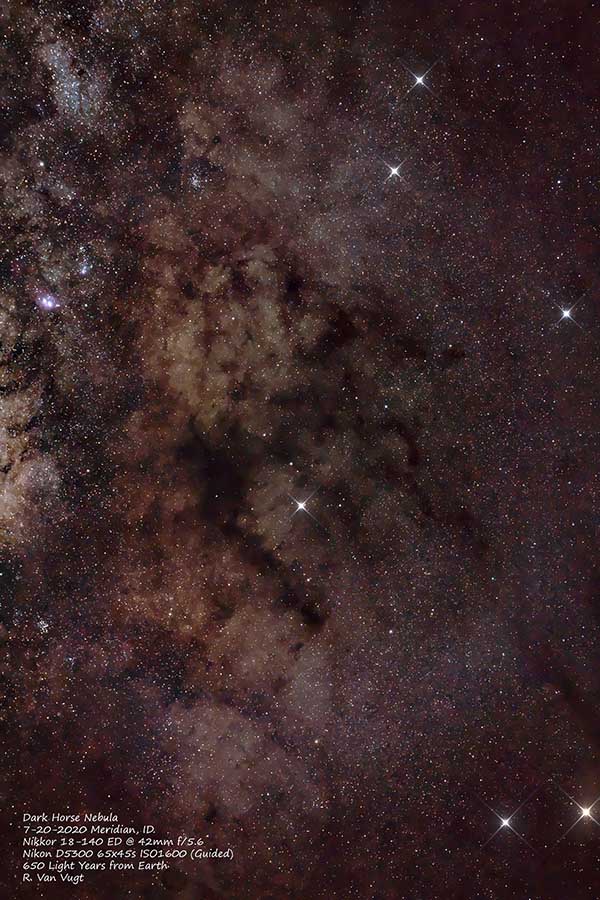
The Dark Horse Nebula or Great Dark Horse (sometimes called the Prancing Horse) is a large dark nebula that, from Earth's perspective, obscures part of the upper central bulge of the Milky Way. The Dark Horse lies in the equatorial constellation Ophiuchus (the Serpent Bearer), near its borders with the more famous constellations Scorpius and Sagittarius. It is a large, visible feature of the Milky Way's Great Rift, uniting several individually catalogued dark nebulae, including the Pipe Nebula. It is visible from Earth only on clear moonless nights without light pollution and with low humidity.
Most nebulae can be described as diffuse nebulae, which means that they are extended and contain no well-defined boundaries. In astronomy, diffuse nebulae is the general term for illuminated nebulae. The three types of diffuse nebulae are reflection nebulae, emission nebulae and supernova remnants. They are diffuse as opposed to the non-diffuse dark nebulae, i.e. the particles have spread out.
In visible light these nebulae may be divided into emission nebulae and reflection nebulae, a categorization that depends on how the light we see is created. Emission nebulae contain ionized gas (mostly ionized hydrogen) that produces spectral line emission. These emission nebulae are often called HII regions; the term "HII" is used in professional astronomy to refer to ionized hydrogen. In contrast to emission nebulae, reflection nebulae do not produce significant amounts of visible light by themselves but instead reflect light from nearby stars.
The Horsehead Nebula, an example of a dark nebula. Dark nebulae are similar to diffuse nebulae, but they are not seen by their emitted or reflected light. Instead, they are seen as dark clouds in front of more distant stars or in front of emission nebulae. Although these nebulae appear different at optical wavelengths, they all appear to be bright sources of emission at infrared wavelengths. This emission comes primarily from the dust within the nebulae.
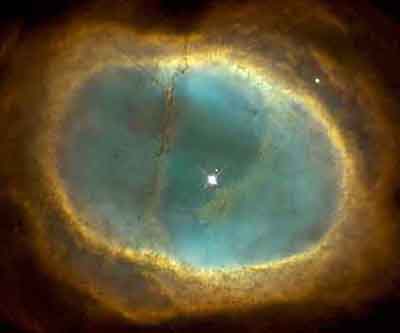

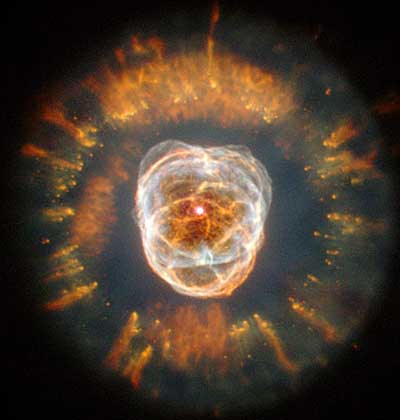
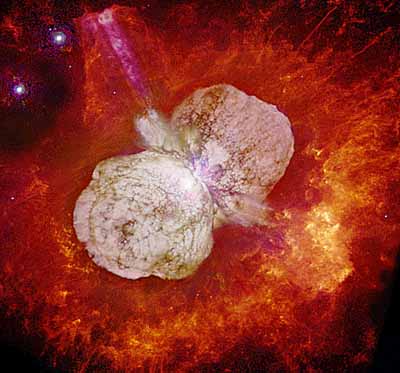

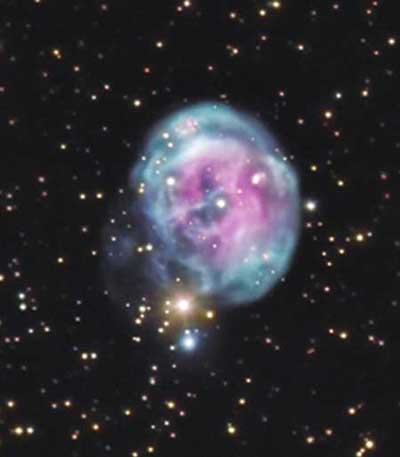




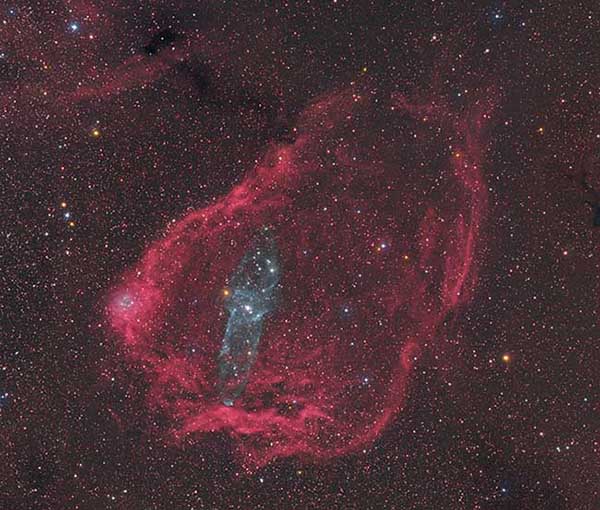
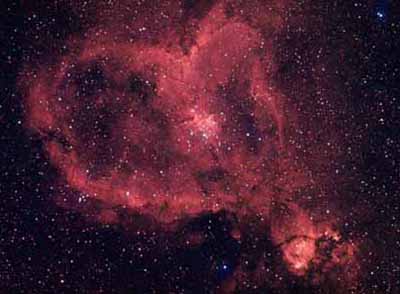
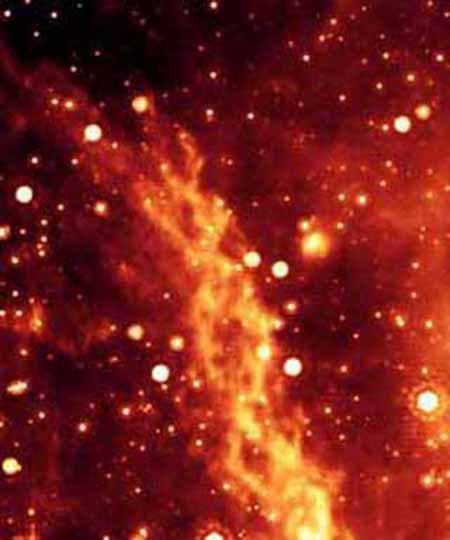
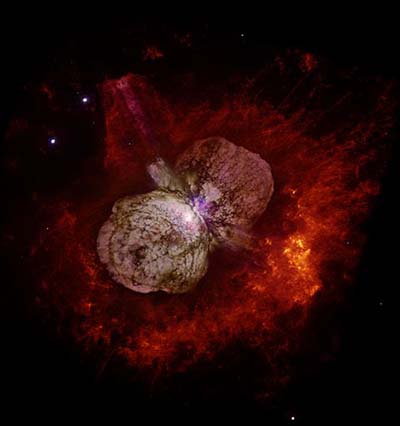
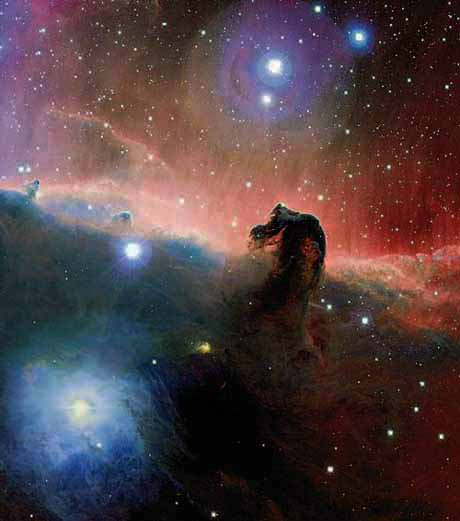
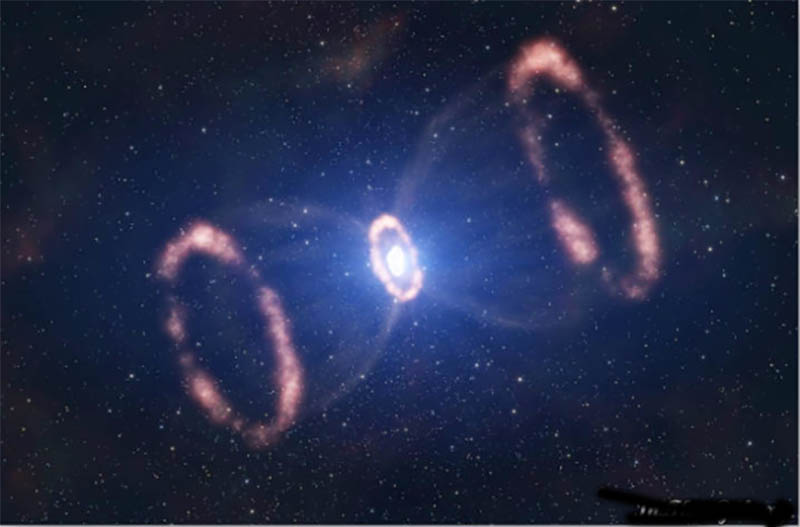
Cosmic hourglass captured by the James Webb Space Telescope reveals birth of a star
CNN - November 17, 2022

Baby Star's Dramatic Eruptions Seen In Celestial Hourglass Nebula
IFL Science - July 3, 2024


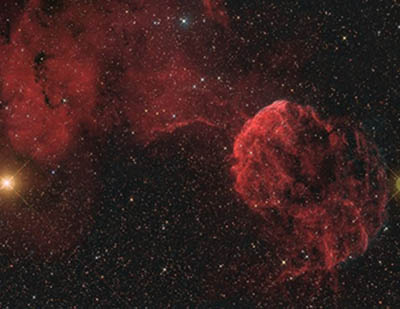
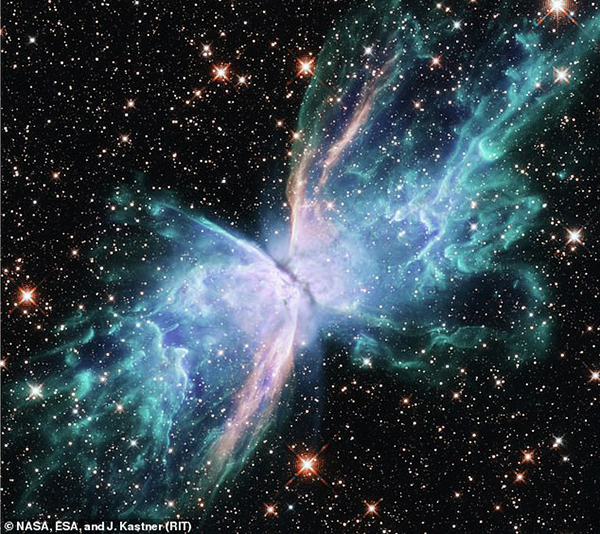
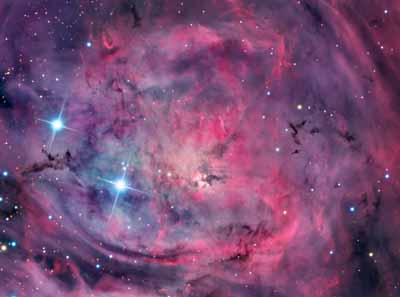
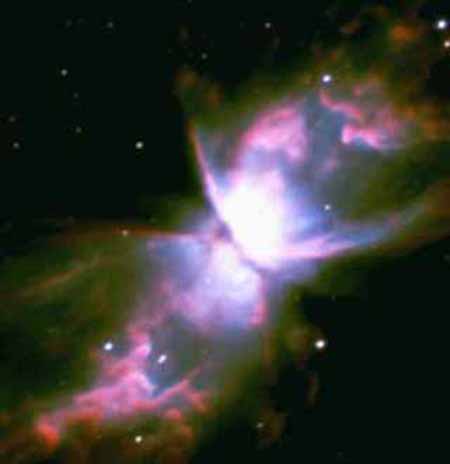
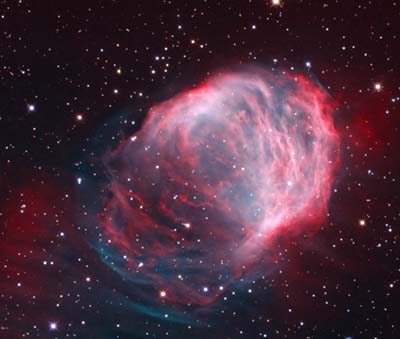

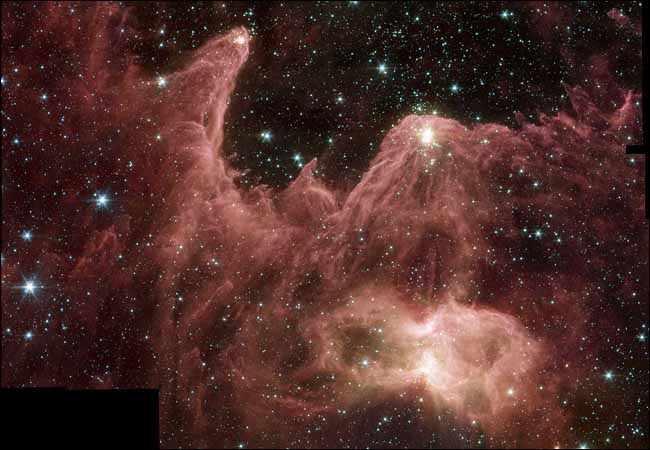
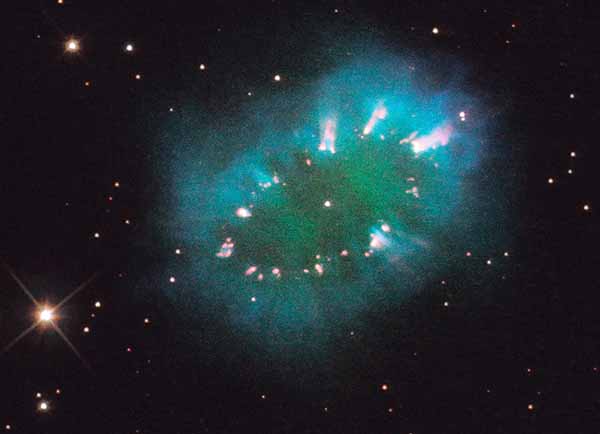
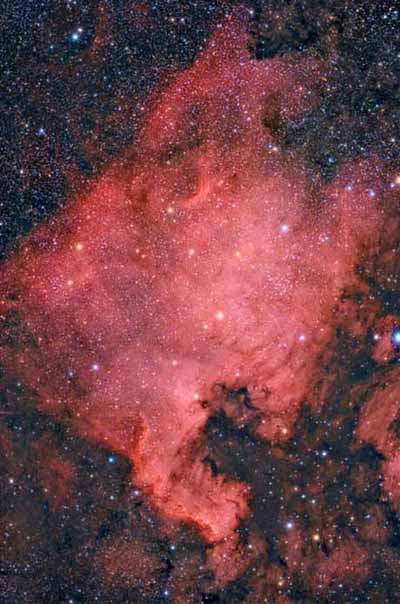
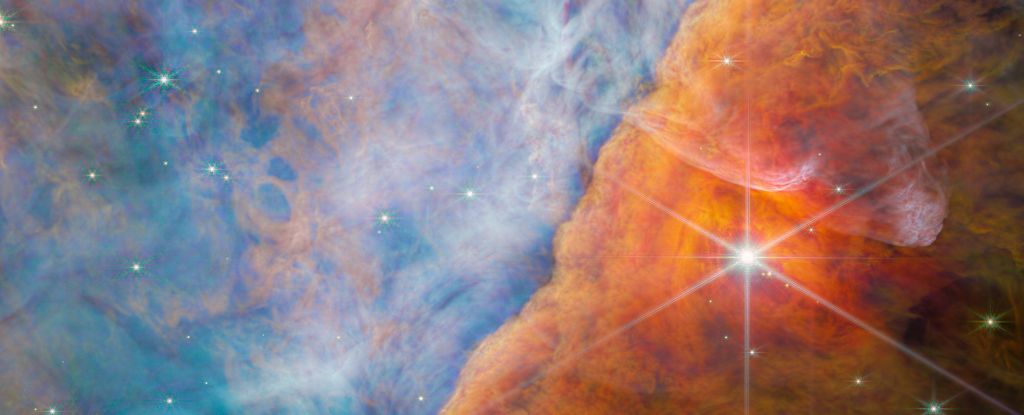
JWST Discovers Crucial Carbon Molecule in The Orion Nebula
Science Alert - June 27, 2023
Hubble's Closeup of The Orion Nebula Looks Like a Surreal Dreamscape
Science Alert - August 14, 2022
When it comes to dramatic and awe-inspiring pictures of space, few can contend with what appears to be a pic of, well, nothing at all: a fascinating image of what seems to be a hole in the fabric of space, taken by the NASA/ESA Hubble Space Telescope Science Alert - October 27, 2022
Described as a "cosmic keyhole" by experts, the phenomenon caught by the telescope is what's known as a reflection nebula - part of the debris left behind by the formation of a newborn star, or in this case, a small, multiple star system known as V380 Orionis in the constellation Orion.
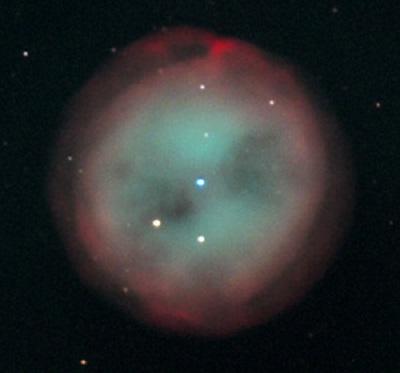
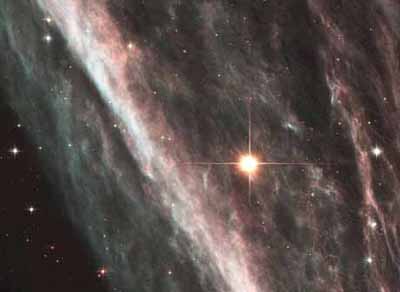
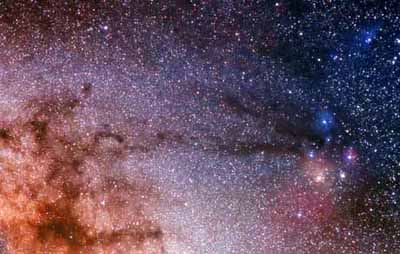
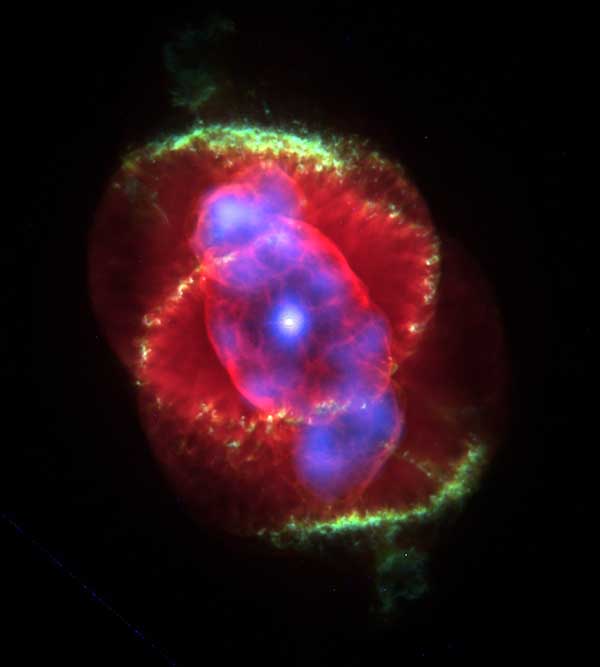
Planetary nebulae are nebulae that form from the gaseous shells that are ejected from low-mass asymptotic giant branch stars when they transform into white dwarfs. These nebulae are emission nebulae with spectral emission that is similar to the emission nebulae found in star formation regions. Technically, they are a type of HII region because the majority of hydrogen will be ionized. However, planetary nebulae are denser and more compact than the emission nebulae in star formation regions. Planetary nebulae are so called because the first astronomers who observed these objects thought that the nebulae resembled the disks of planets, although they are not at all related to planets.
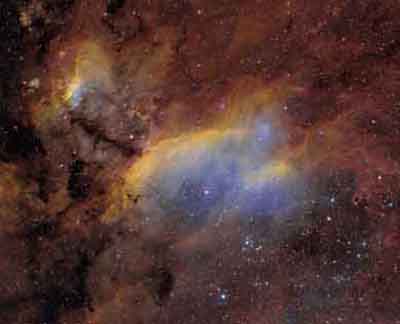
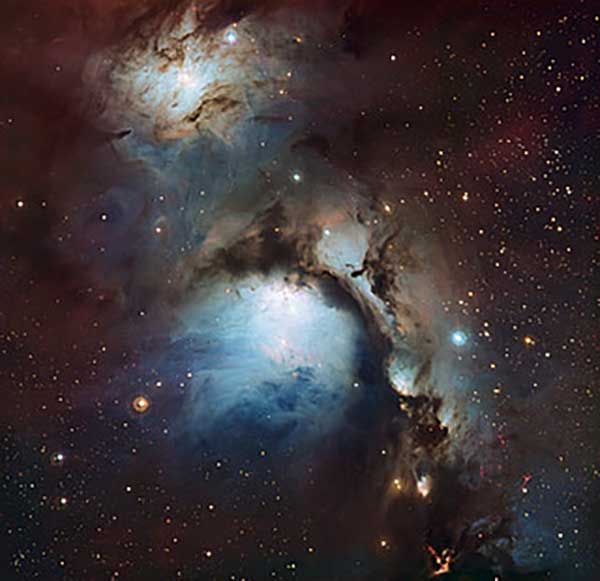
In Astronomy, reflection nebulae are clouds of dust which are simply reflecting the light of a nearby star or stars. The energy from the nearby star, or stars, is insufficient to ionize the gas of the nebula to create an emission nebulae, but is enough to give sufficient scattering to make the dust visible. Thus, the frequency spectrum shown by reflection nebulae is similar to that of the illuminating stars. Among the microscopic particles responsible for the scattering are carbon compounds (e. g. diamond dust) and compounds of other elements such as iron and nickel. The latter two are often aligned with the galactic magnetic field and cause the scattered light to be slightly polarized (Kaler, 1998). Edwin Hubble distinguished between the emission and reflection nebulae in 1922. Reflection nebulae are usually blue because the scattering is more efficient for blue light than red (this is the same scattering process that gives us blue skies and red sunsets).
Ring Nebula: A Dying Star Beams In The Depths Of Space In JWST's New Image
IFL Science - August 21, 2023



